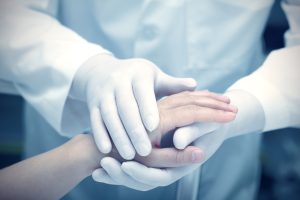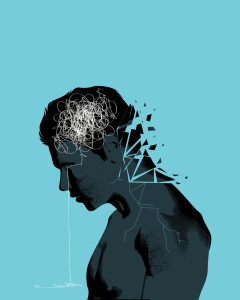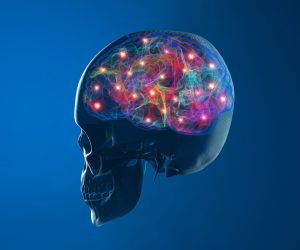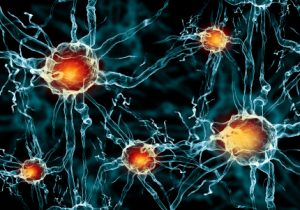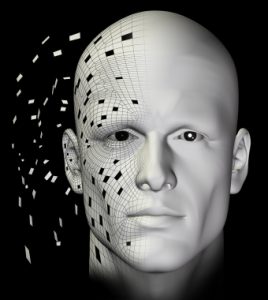Case management plays a pivotal role in long term acute care (LTAC) by bridging the gap between various healthcare services and ensuring that patients receive coordinated, continuous care. This article delves into the multifaceted nature of case management, exploring its impact on patient outcomes, the integration of national standards, and the optimization of health-related goals. We also examine the importance of on-site case management, discharge planning, and the role of laboratory services in supporting the comprehensive care that LTAC patients require.

Please also review AIHCP’s and The American Academy of Case Management’s Case Management Certification for healthcare professionals.
Key Takeaways
- Case management in LTAC involves interdisciplinary coordination, national standards integration, and continuity of post-discharge care.
- On-site case management supports post-acute needs through accurate patient information maintenance and identification of utilization issues.
- Effective discharge planning is crucial for avoiding readmissions and ensuring safe transitions to post-acute care settings.
- Case managers work within multidisciplinary teams to facilitate complex case reviews and provide resources for optimal patient care.
- The case management model in LTAC is essential for addressing unmet needs, particularly in home care for older adults with complex conditions.
The Role of Case Management in Long Term Acute Care
Interdisciplinary Care Coordination
In the realm of long term acute care, interdisciplinary care coordination is pivotal for delivering comprehensive and quality care. The Case Manager plays a central role, orchestrating the efforts of various professionals to address the multifaceted needs of patients. This collaborative approach ensures that each aspect of the patient’s health and well-being is meticulously attended to by the appropriate team member.
Effective care coordination involves a series of strategic actions:
- Accurate medical necessity screening and submission for Physician Advisor review.
- Continuous monitoring, tracking, and evaluation of all care and services.
- Transition planning assessment, reassessment, and implementation of the transition plan.
- Leading and facilitating multi-disciplinary patient care conferences.
The synergy of interdisciplinary teams is essential for tailoring care models to individuals with complex needs. By working together, these teams provide a holistic approach to patient care, which is more than the sum of its parts.
Collaboration with physicians, telephonic care coordinators, and social workers is crucial to create a safe discharge plan for complex patients. This process includes the assessment of members, development of the plan from various care settings, and coordination of post-acute services. The goal is to ensure that quality care continues seamlessly beyond the hospital setting.
Ensuring Continuity of Care Post-Discharge
Ensuring continuity of care post-discharge is a critical component of case management in long term acute care. Integrating appointment scheduling into the discharge plan is likely to positively impact continuity of care in the initial days post-hospitalization. This integration aligns with the patient’s immediate healthcare needs and supports a seamless transition from hospital to home or another care setting.
To achieve this, case managers may perform telephonic outreach to patients within 48 hours post hospital discharge, completing an assessment of the member’s status. This outreach is a proactive step in confirming that patients understand their care instructions and have the necessary follow-up appointments scheduled.
The coordination of post-discharge care involves not only scheduling but also monitoring, tracking, and evaluating all care and services to ensure quality and appropriateness. Case managers act as a resource to facility case managers and discharge planners, providing updates to practitioners and healthcare teams.
Collaboration with physicians, telephonic care coordinators, and inpatient case management/social workers is essential to create a safe discharge plan for complex patients. This multidisciplinary approach ensures that all aspects of the patient’s care are considered and that the transition is as smooth as possible.
Integration of National Standards for Case Management

The integration of national standards into case management practices is essential for ensuring high-quality care and services. National standards provide a framework for case managers to deliver consistent and effective care across various healthcare settings. These standards encompass a range of critical areas, including caregiver training, risk assessment for social determinants of health, community health integration, and navigation of the principal illness.
To align with these standards, case managers must adhere to specific guidelines and protocols. For instance, the I-CLSC guidelines serve as a normative framework supporting home care staff and managers in their clinical actions. These guidelines are crucial for maintaining a standardized approach to care management interventions.
The adoption of national standards in case management is not just about compliance; it’s about elevating the quality of care to meet the complex needs of patients in long term acute care settings.
Furthermore, establishing clear guidelines for working with partners is imperative. It ensures that case managers have a defined scope of responsibilities and understand what constitutes high-quality care. This clarity is vital for both the providers and recipients of care, particularly in a multi-provider system where unmet needs are prevalent.
On-Site Case Management and Social Services
Supporting Post-Acute Needs
In the realm of long term acute care, supporting post-acute needs is a critical function of case management. This involves a comprehensive approach to ensure that patients receive the necessary medical management, including the monitoring of vital signs, medication management, and addressing any complications that may arise.
Case managers play a pivotal role in assessing the physical and psycho-social needs of patients. They develop individualized treatment plans and coordinate with interdisciplinary teams to achieve therapeutic goals. Moreover, case managers are instrumental in aiding older adults and their informal caregivers by providing emotional support and identifying new needs that may emerge during the transition from acute care to home or other long-term care settings.
The goal is to facilitate a safe and effective transition, balancing the need to return older adults home safely against the pressures of freeing up hospital beds.
For many patients, the transition to public long-term care housing is a significant step, especially when staying at home is deemed unsafe. Case managers must navigate these complex situations with sensitivity and expertise, ensuring that the care provided aligns with the best interests of the patient.
Maintenance of Accurate Patient Information
In the realm of long-term acute care, the maintenance of accurate patient information is a cornerstone for ensuring high-quality care and efficient service delivery. Accurate patient information underpins various aspects of case management, from utilization management to compliance with regulatory requirements.
- Timely, complete, and concise documentation in the Case Management system is essential.
- Accurate maintenance of patient demographic and insurance information is crucial for seamless care coordination.
- Proper documentation and reporting of over and underutilization help in maintaining the integrity of healthcare services.
Ensuring the privacy and confidentiality of patient information is not only a principle of responsibility but also a legal and ethical mandate. Case managers must adhere to stringent protocols to protect patient data and uphold the trust placed in healthcare institutions.
The integration of accurate patient information with other departments is vital for a holistic approach to patient care. It supports cross-functional efforts to meet organizational goals and enhances the overall efficiency of healthcare delivery.
Identification of Avoidable Days and Utilization Issues
In the realm of long-term acute care, identification of avoidable days is crucial for optimizing hospital resources and enhancing patient flow. Avoidable days refer to hospital stays that could be shortened if alternative care settings or more efficient care coordination were in place. These days not only represent a financial burden to healthcare facilities but also a missed opportunity for patients to receive care in a more appropriate setting.
The challenge of managing avoidable days is compounded by the complexities of discharging patients to subsequent care facilities, especially in more rural hospitals where resources may be limited.
To address utilization issues, case managers must meticulously document patient situations and coordinate with multidisciplinary teams to ensure timely interventions. This includes monitoring for over and underutilization, which can lead to either unnecessary hospital days or inadequate patient care. The following list outlines key responsibilities of case managers in this context:
- Timely and concise documentation in case management systems
- Maintenance of accurate patient demographic and insurance information
- Identification and documentation of potentially avoidable days
- Reporting over and underutilization
By focusing on these areas, case managers can significantly reduce avoidable inpatient days and improve the overall efficiency of long-term acute care services.
Discharge Planning and Avoiding Readmissions
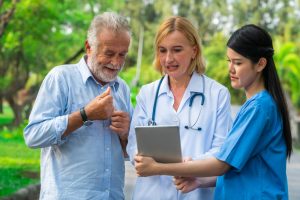
Developing Safe Discharge Plans
Developing safe discharge plans is a critical component of case management in long term acute care. The goal is to ensure a seamless transition from the hospital to the next phase of care, whether that be home, a skilled nursing facility, or another care setting. This process involves a comprehensive assessment of the patient’s needs and the coordination of necessary post-acute services.
- Collaborates with a multidisciplinary team to assess patient needs.
- Develops a plan that includes all necessary post-discharge services.
- Coordinates with external providers to ensure continuity of care.
- Performs outreach to patients within 48 hours post-discharge.
The discharge plan must be adaptable, with the ability to make recommendations for modifications as the patient’s condition evolves. It is essential to identify and communicate any potential barriers to the discharge plan, ensuring that appointments and coordination with post-acute service providers are established to prevent avoidable readmissions.
Coordinating Post-Acute Services
The coordination of post-acute services is a critical function of case management, ensuring a seamless transition from acute care settings to the next phase of recovery. Case managers collaborate with a multidisciplinary team to develop a comprehensive plan that addresses the patient’s unique needs, including follow-up medical care and any necessary support services.
- Collaborates with physicians and care coordinators to assess patient needs.
- Develops a safe discharge plan from various facilities such as acute inpatient, skilled nursing, LTAC, and Inpatient Rehab.
- Identifies and communicates any barriers to the discharge plan.
- Ensures appointments and coordination of services with vendors.
Coordination efforts include telephonic outreach within 48 hours post-discharge to assess the patient’s status and to communicate the care plan to primary and specialist care providers. This proactive approach is designed to prevent gaps in care and to facilitate the necessary resources to achieve the best possible outcomes for the patient.
The ultimate goal is to ensure continuity of care and to prevent any disruptions that could lead to readmissions or other complications. By maintaining accurate patient information and identifying potential issues early, case managers play a pivotal role in the patient’s recovery journey.
Preventing Avoidable Readmissions
The prevention of avoidable readmissions is a critical component of effective case management in long term acute care. Ensuring that patients receive the right sequence of care at the appropriate level is essential for maintaining patient health and preventing costly and distressing readmissions. This involves a multidisciplinary approach that includes utilization management, transition management, and thorough care coordination.
- Utilization Management: Supporting medical necessity and denial prevention.
- Transition Management: Promoting appropriate length of stay and patient satisfaction.
- Care Coordination: Demonstrating throughput efficiency while assuring care is at the right sequence and at the appropriate level of care.
The integration of national standards for case management is vital in establishing a framework for safe discharge and the prevention of avoidable readmissions. This includes compliance with state and federal regulatory requirements and education for physicians, patients, families, and caregivers.
The Affordable Care Act of 2010 played a significant role in emphasizing the importance of reducing readmission rates through the Hospital Readmissions Reduction Program. This initiative has incentivized hospitals to adopt hospital-based approaches that focus on readmission prevention, aligning with the overarching goal of case management to support post-acute needs and ensure continuity of care.
Case Management Integration in Multidisciplinary Teams

Facilitating Complex Case Review
In the realm of long term acute care, facilitating complex case reviews is a critical function of case management. This process involves a meticulous evaluation of each patient’s situation, ensuring that all aspects of care are considered and that the most effective treatment plan is in place. Complex case reviews often require collaboration with various healthcare professionals to address the multifaceted needs of patients.
Key responsibilities in this process include making appropriate referrals to other departments, identifying and referring complex patients to Social Work Services, and assuring that patient education is completed to support post-acute needs. Documentation is also a vital component, requiring timely and concise entries in the Case Management system to maintain a clear and accurate record of the patient’s care trajectory.
The goal of complex case reviews is not only to provide individualized care but also to enhance the overall operational efficiency of the healthcare facility. By streamlining patient flow and ensuring that each case is managed effectively, case managers contribute significantly to both patient outcomes and the financial health of the institution.
Regular coordination and participation in case management conferences are essential for updating the plan of care as necessary. This continuous monitoring and evaluation ensure that quality care is being delivered and that any necessary adjustments are made promptly.
Collaboration with Physicians and Ancillary Departments
Effective collaboration with physicians and ancillary departments is crucial for the seamless delivery of patient care in long term acute settings. Case managers play a pivotal role in this process, ensuring that all aspects of a patient’s care are coordinated across various specialties and services. They work closely with physicians to develop individualized care plans that address the specific needs of each patient, incorporating input from a range of healthcare professionals.
- Collaborates with physicians, telephonic care coordinators, and social workers to create a safe discharge plan for complex patients.
- Provides case management updates to healthcare teams, facilitating a unified approach to patient care.
- Arranges and coordinates necessary appointments, streamlining the care process for patients.
By building effective working relationships with practitioners and other departments within the health plan, case managers enhance the quality of patient care and contribute to better health outcomes.
The integration of services such as 24/7 physician coverage, multi-specialty consultations, and rehabilitation programs is a testament to the interdisciplinary nature of long term acute care. Case managers are instrumental in navigating these services to ensure that patient care is not only comprehensive but also cohesive.
Resource Provision for Facility Case Managers
Facility case managers play a pivotal role in ensuring that patients receive comprehensive and coordinated care. Resource provision for these professionals is essential to maintain the high standards of case management within healthcare facilities. Resources typically include access to up-to-date patient information, care protocols, and interdisciplinary team insights.
Effective resource provision involves several key components:
- Timely access to patient data and healthcare analytics
- Educational materials and training for ongoing professional development
- Tools for efficient communication with healthcare teams and patients
- Support systems for managing complex cases and workload
By equipping case managers with the necessary resources, healthcare facilities can enhance the quality of care and streamline case management processes. This, in turn, can lead to improved patient outcomes and increased satisfaction among staff.
The Impact of Case Management on Patient Outcomes

Monitoring and Evaluating Care and Services
Effective case management hinges on the ability to monitor and evaluate care and services continuously. This process ensures that patients receive quality care tailored to their specific needs and that any adjustments to care plans are made in a timely manner.
- Continuously coordinates, monitors, tracks, and evaluates all care and services.
- Re-assesses and reinforces members’ self-management skills.
- Acts as a resource to facility Case Managers and discharge planners.
- Provides case management updates to practitioners and healthcare teams.
The goal is to maintain a dynamic and responsive approach to patient care that adapts to changing conditions and patient responses.
Documentation plays a crucial role in this process, as it allows for the tracking of interventions and their outcomes. Regular case management conferences facilitate the updating of care plans and ensure that all members involved in the care are informed and aligned with the patient’s needs.
Reinforcing Self-Management Skills
Effective case management extends beyond the immediate clinical setting, focusing on empowering patients to take an active role in their own care. Reinforcing self-management skills is crucial for long-term success and patient autonomy. This involves teaching patients about their health situation and the necessary skills for self-care, which can significantly reduce the burden on healthcare systems.
- Continuously coordinates and monitors care quality
- Reassesses and reinforces self-management skills
- Acts as a resource for facility case managers
Case managers play a pivotal role in ensuring that patients are not only receiving quality care but are also equipped with the knowledge and tools to manage their conditions effectively. This proactive approach can lead to better health outcomes and a more efficient use of healthcare resources.
By implementing strategies such as detailed care plans and personalized patient education, case managers can address the unique needs of each patient. This personalized attention helps in building a stronger patient-case manager relationship, fostering trust and improving adherence to care plans.
Providing Updates to Healthcare Teams
Effective case management hinges on the timely and accurate communication of patient updates to healthcare teams. Case managers play a pivotal role in ensuring that all members of the healthcare team are informed of a patient’s status and progress. This includes updates on treatment plans, discharge preparations, and any changes in the patient’s condition.
- Collaborates with healthcare teams to provide referral information.
- Facilitates necessary appointments for patients.
- Builds effective relationships within the health plan.
By maintaining a continuous flow of information, case managers support the delivery of coordinated and comprehensive care.
Case managers also work closely with departments that focus on disease-specific population-based care, tailoring their communication to the unique needs of each department. This interdisciplinary approach is essential for addressing the complex needs of long-term acute care patients.
Case Management Models for Optimizing Health-Related Goals
Defining Case Management Processes

Case management processes are essential for ensuring that each patient receives comprehensive and coordinated care tailored to their individual needs. The core of case management lies in the assessment and planning stages, where case managers evaluate the patient’s condition and determine the necessary services and interventions. This involves a series of steps:
- Initial assessment of the patient’s health status and needs
- Development of a care plan that outlines goals and interventions
- Coordination of services and resources to meet the outlined goals
- Continuous monitoring and reevaluation of the care plan
- Modification of the plan as needed based on patient progress and changing needs
Case management is a dynamic and patient-centered process that requires constant adaptation and reassessment to ensure optimal outcomes.
Effective case management also includes the maintenance of accurate patient information and timely documentation in the case management system. This ensures that all team members are informed and can collaborate effectively. Additionally, case managers play a crucial role in identifying and addressing potentially avoidable days and utilization issues, which can significantly impact the efficiency and cost-effectiveness of care.
Coordinating Services to Meet Patient Needs
Effective case management hinges on the ability to coordinate services that align with patient needs, ensuring a seamless transition across various levels of care. This involves a meticulous process of collaboration among healthcare providers to establish a comprehensive care plan.
- Collaborates with physicians, telephonic care coordinators, and social workers to develop a safe discharge plan.
- Monitors and evaluates care continuously to ensure quality and appropriateness.
- Reassesses and reinforces self-management skills, including symptom and medication management.
Coordination of care is the process of organizing and integrating health care services for patients across care settings and providers.
The goal is to optimize health outcomes by managing every aspect of patient care, from medical necessity screening to the implementation of transition plans. This includes facilitating multi-disciplinary patient care conferences and ensuring that education is provided to support post-acute needs. Maintaining accurate and timely documentation is crucial for the ongoing assessment and planning required for complex patient cases.
Addressing Unmet Needs in Home Care
In the realm of home care, case management plays a pivotal role in identifying and addressing the unmet needs of individuals, particularly older adults. A multi-provider system often complicates the delivery of services, leading to gaps in care that can adversely affect health outcomes. To mitigate these issues, case managers work to develop personalized care plans that integrate necessary services, thereby optimizing health-related goals for each patient.
The goal of home care is to ensure that older adults can remain in their homes safely and as long as possible, with the support of a coordinated network of health and social services.
A review of patient and caregiver perspectives reveals a spectrum of unmet needs, ranging from basic assistance to complex medical care. Addressing these needs requires a nuanced understanding of each individual’s unique situation and the ability to navigate a fragmented healthcare system. The following list outlines key areas where case management can make a significant impact:
- Comprehensive assessment of patient needs
- Coordination of formal and informal care services
- Transition support for older adults moving to long-term care facilities
- Advocacy for patient preferences and autonomy
- Management of healthcare resources to prevent avoidable hospital stays
The Role of Laboratory Services in Case Management
Providing 24-Hour Lab Services
The availability of 24-hour laboratory services is a critical component in the management of patient care in long term acute care settings. Rapid test results are not just a convenience; they are often a necessity for the timely diagnosis and treatment of acute conditions.
Central Valley Specialty Hospital exemplifies this service by ensuring that laboratory services are available around the clock, every day of the year. This commitment to accessibility allows for the initial test for sick or critical cases to be conducted without delay, facilitating prompt and effective management of patient health.
The role of point-of-care testing (POCT) in acute care is to provide rapid initial diagnoses that enable early and proper management of patient conditions.
The following list outlines the key benefits of 24-hour lab services in a long term acute care hospital:
- Immediate availability of diagnostic tests
- Quick turnaround time for test results
- Support for interdisciplinary team decision-making
- Reduction in avoidable days due to delayed diagnostics
- Enhanced capacity for managing critical and complex cases
Ensuring Rapid Test Results for Timely Care
In the realm of long term acute care, the expediency of laboratory services is paramount. Rapid test results are critical for the timely management of patient care, allowing healthcare professionals to make informed decisions swiftly. This is particularly vital in acute settings where delays can significantly impact patient outcomes.
- Timely lab results enable prompt interventions.
- They reduce the risk of complications by allowing for early detection and treatment.
- Rapid testing supports the dynamic nature of patient care plans, which may need to be adjusted based on new information.
The integration of efficient laboratory services within case management ensures that patient care is not only reactive but also proactive. By anticipating the needs of patients, case managers can orchestrate a comprehensive care plan that incorporates the latest lab findings.
The importance of laboratory turnaround times cannot be overstated. A streamlined process for lab services contributes to the overall efficiency of case management, ultimately fostering better patient outcomes. As such, case managers often collaborate closely with laboratory personnel to minimize any potential delays in testing and reporting.
Understanding Long Term Acute Care Hospitals

Defining Long Term Acute Care
Long Term Acute Care (LTAC) hospitals specialize in treating patients who require extended medical care beyond the typical acute hospital stay. These facilities provide a bridge between the hospital and home or a lower level of care, ensuring that patients with complex medical needs receive continuous, specialized attention.
- LTAC hospitals cater to patients with serious medical conditions that are stable but still require close monitoring and ongoing treatment.
- They offer services such as ventilator weaning, complex wound care, and intensive rehabilitation.
- The goal is to improve patient outcomes and facilitate a transition to the next appropriate level of care.
LTAC hospitals have become an integral part of the healthcare continuum, addressing the unique needs of a growing population of patients who require long-term medical support.
The role of LTACs is crucial in managing the health of frail or older adults who are unable to reside independently. These facilities are equipped to handle a spectrum of medical and non-medical supports and services, contributing significantly to the patient’s recovery and quality of life.
The Evolution of Long Term Acute Care Hospitals
The landscape of long term acute care (LTAC) has undergone significant transformation over the years. Initially, LTAC facilities emerged as a response to the growing need for specialized care for patients with complex medical conditions that required extended hospital stays. These hospitals have evolved to become crucial components in the continuum of care, bridging the gap between traditional acute care hospitals and various post-acute care settings.
The evolution of LTAC hospitals reflects broader changes in healthcare delivery, emphasizing patient-centered care and the efficient use of resources. The integration of LTAC into the healthcare system has been a benefit to the surrounding acute hospitals, providing a dedicated environment for patients who need prolonged recovery time and specialized attention.
The vision for LTAC hospitals is to be recognized for outstanding specialty and long term care services, achieved through quality services, innovative practices, and profound leadership.
As LTAC hospitals continue to adapt, they play a pivotal role in meeting the demands of an aging population and the complexities of modern healthcare. Their development is marked by a commitment to excellence and a mission to provide dignity, growth, and value to patients, employees, and physicians alike.
Extensive Rehabilitation Services in Case Management
Training of Case Managers in Clinical and Rehabilitation Services
Case managers play a pivotal role in the rehabilitation process, often requiring a comprehensive understanding of both clinical and psychosocial aspects of patient care. Their extensive training enables them to assess and plan for the complex needs of older adults, ensuring that each individual receives personalized and effective services.
The training of case managers encompasses a variety of skills and knowledge areas:
- Clinical assessment techniques
- Development of individualized care plans
- Coordination with service providers
- Problem-solving strategies
- Ongoing reassessment and follow-up care
Case managers are instrumental in bridging the gap between patients and the multidisciplinary teams that provide care. They are not only advocates for the patients but also key players in ensuring that the care delivered is continuous, comprehensive, and tailored to the patients’ evolving needs.
It is essential for case managers to stay updated with the latest guidelines and best practices, such as those outlined in the I-CLSC guidelines, to maintain the quality of care. They must also meet organizational requirements, including the documentation of interventions and adherence to national standards for case management.
Assessing and Planning for Older Adults with Complex Needs
In the realm of long term acute care, case managers play a pivotal role in assessing and planning for older adults with complex needs. A comprehensive assessment must encompass medical, environmental, financial, legal, and social factors. This multidimensional approach ensures that all aspects of the older adult’s life are considered in the care plan.
- Medical assessment to determine health status and ongoing care requirements.
- Environmental evaluation to ensure the living conditions support the individual’s health and safety.
- Financial review to identify resources and assistance programs.
- Legal considerations to protect the rights and interests of the older adult.
- Social assessment to understand the support network and community connections.
The assessment process is not without its challenges. It is often time-consuming, involving an extensive number of questions and detailed documentation. Despite the effort required, the information gathered is crucial for tailoring services to the individual’s needs.
Furthermore, case managers must balance organizational requirements with the need to spend adequate time providing care. They are tasked with the difficult decision of returning older adults to their homes safely versus freeing up hospital beds. This decision-making process is guided by a standardized assessment tool, which, while thorough, has its limitations in terms of time investment and practical utility in everyday case management.
At the forefront of professional development, our Healthcare Case Management Certification offers unparalleled guidance and support for healthcare professionals seeking to enhance their expertise. Our comprehensive certification and fellowship programs are designed to foster continued learning, growth, and achievement in the dynamic field of case management. Don’t miss the opportunity to elevate your career and join a community of distinguished professionals. Visit our website now to learn more about our certification process and take the first step towards achieving excellence in case management.
Conclusion
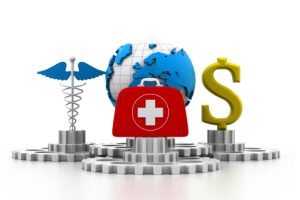
In conclusion, case management in long-term acute care (LTAC) is a critical component of healthcare that ensures the delivery of quality care and the coordination of services across multiple departments. The integration of case management across admissions, rehabilitation services, laboratory, nursing, pharmacy, radiology, and respiratory services, among others, is essential for a seamless patient experience. The role of case managers is multifaceted, involving the assessment of patient needs, the development of safe discharge plans, and the prevention of avoidable readmissions. By adhering to national standards and employing a comprehensive case management model, healthcare providers can optimize health-related goals and outcomes for older adults and those with complex needs. The collaboration between case managers, social workers, physicians, and interdisciplinary teams is paramount in facilitating continuity of care, supporting post-acute needs, and ensuring that care is delivered in the most appropriate setting. As healthcare continues to evolve, the importance of effective case management in LTAC settings becomes increasingly evident, highlighting the need for ongoing research, training, and refinement of case management practices to meet the demands of a diverse patient population.
Please also remember to review The American Academy of Case Management’s Healthcare Case Management Program and see if it meets your academic and professional goals.
Frequently Asked Questions
What is the role of case management in long term acute care?
The role of case management in long term acute care includes coordinating interdisciplinary care, ensuring continuity of care post-discharge, and integrating national standards for case management to provide quality care and optimize patient outcomes.
How do case managers support post-acute needs?
Case managers support post-acute needs by providing timely, complete, and concise documentation in the case management system, maintaining accurate patient information, and identifying and addressing potentially avoidable days and utilization issues.
What is involved in creating a safe discharge plan?
Creating a safe discharge plan involves coordinating post-acute services and follow-up medical care to ensure continuity of care. Case managers identify and communicate any barriers to the discharge plan and ensure coordination with vendors.
How does case management prevent avoidable readmissions?
Case management prevents avoidable readmissions by developing safe discharge plans, coordinating post-acute services, and addressing barriers to care. This includes following national standards for case management scope of services.
What is the impact of case management on patient outcomes?
Case management positively impacts patient outcomes by continuously coordinating, monitoring, and evaluating care and services. It involves reassessing and reinforcing self-management skills and providing updates to healthcare teams.
How does case management integrate services to meet patient needs?
Case management integrates services to meet patient needs by developing plans that coordinate and integrate services needed to optimize health-related goals and outcomes, especially for older adults with complex needs.
What are the benefits of 24-hour lab services in case management?
24-hour lab services in case management provide rapid test results, ensuring timely care and interventions. This accelerates the decision-making process for patient care and contributes to better management of acute conditions.
What training do case managers in extensive rehabilitation services receive?
Case managers in extensive rehabilitation services are trained in clinical, medical, psychosocial, or rehabilitation aspects. They assess and plan for older adults with complex needs, coordinating services and interventions accordingly.
Additional Resources
Yu, Z. et, al. (2020). “Case Management Models and Continuing Care: A Literature Review across nations, settings, approaches, and assessments”. Sage Journals. Access here
Capitman, J. (1988). “Case management for long-term and acute medical care”. Health Care Financ Rev. 1988 Dec; 1988(Suppl): 53–55. National Library of Medicine. Access here
Cohen, E.L & Cesta. T.J. (1994). “Case management in the acute care setting. A model for health care reform”. J. Case Management. 1994 Fall;3(3):110-6, 128. National Library of Medicine. Access here
Gaughran, P. “Role of the Case Manager in the LTACH”. Specialty Hospital of Central Jersey. Access here








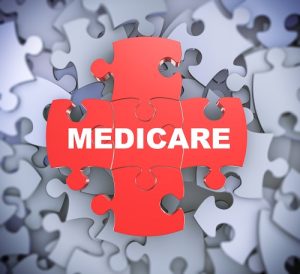






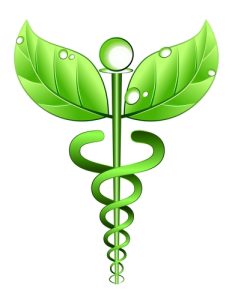
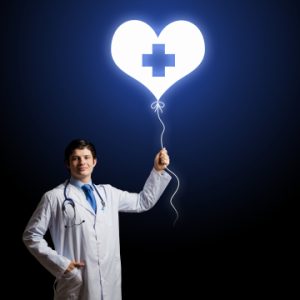


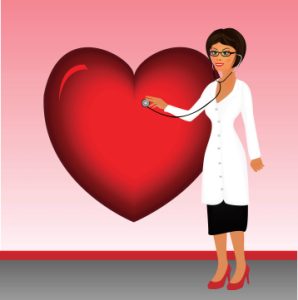

 Written by Veronica Turner
Written by Veronica Turner

